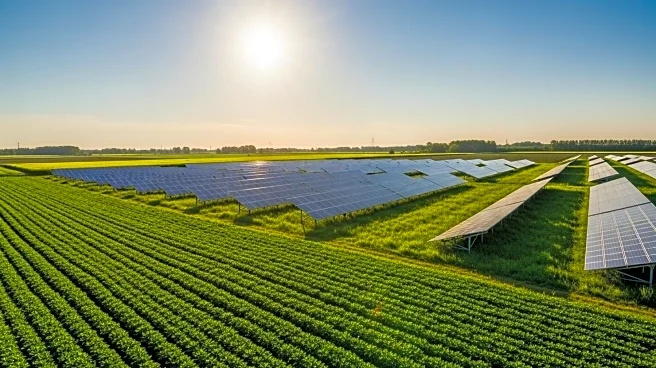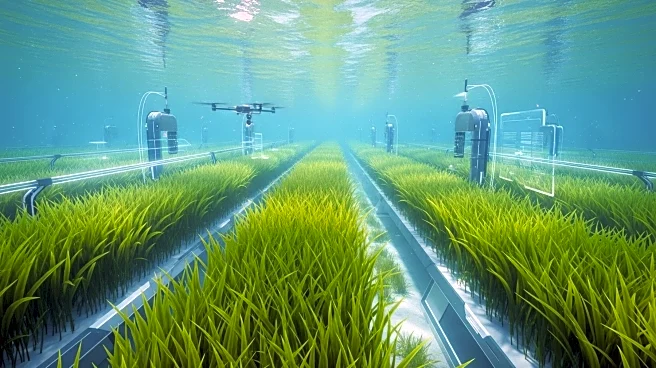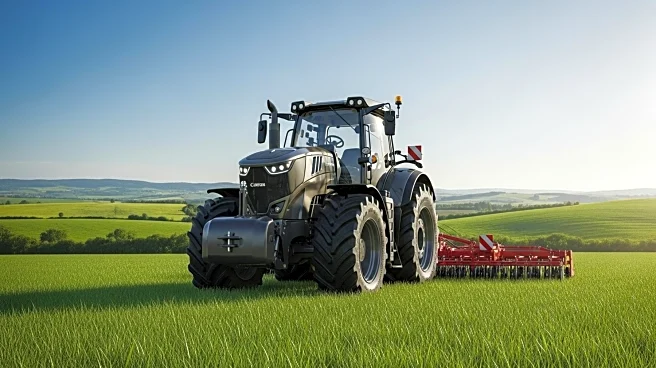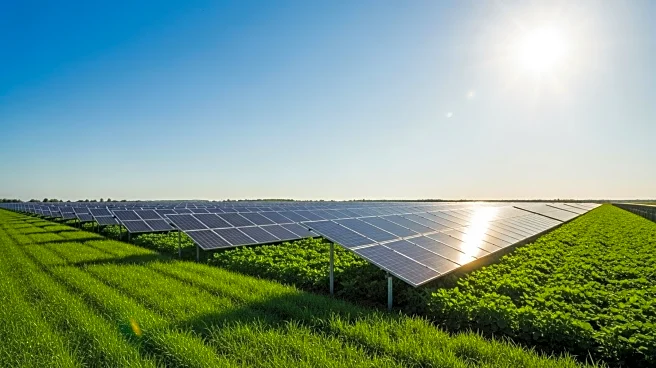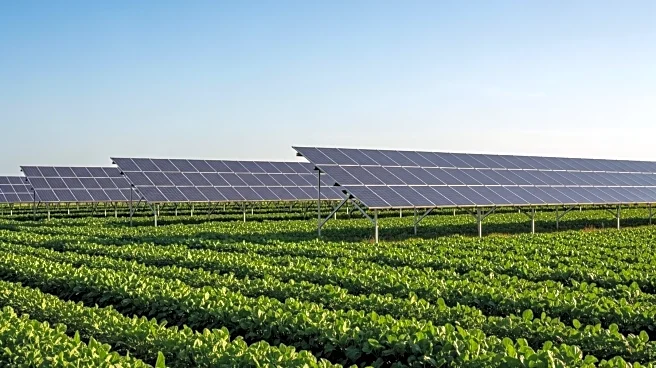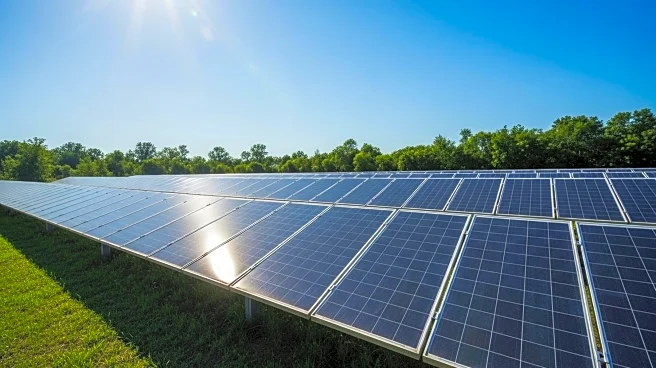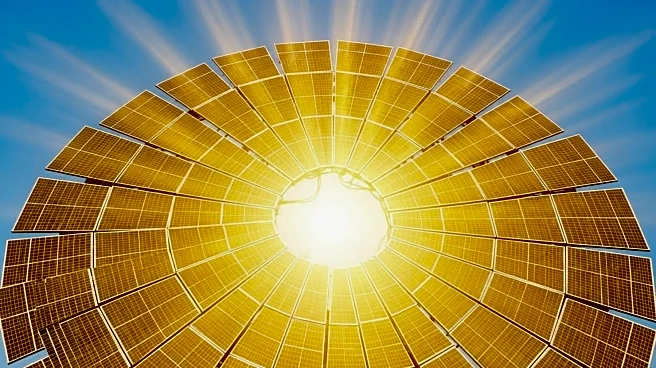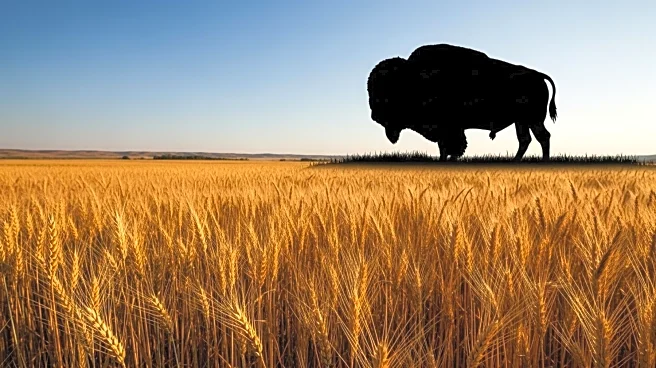What is the story about?
What's Happening?
World leaders have committed to tripling global renewable energy capacity by the end of the decade, as announced at the COP28 climate conference in Dubai. This ambitious goal necessitates a significant expansion of renewable energy projects, particularly solar and wind farms, which require extensive land. These projects often intersect with agricultural zones, conservation areas, and Indigenous territories, leading to potential conflicts over land use. Agrivoltaics, the practice of combining solar power and agriculture on the same land, offers a solution. A pilot project in Denmark has demonstrated success in this area, using vertically mounted solar panels to optimize both energy generation and crop growth. The study, conducted by Aarhus University, found that crops such as wheat and grass-clover mixtures thrived alongside solar panels, which occupied only 10% of the land.
Why It's Important?
The integration of solar power with agriculture through agrivoltaics presents a sustainable solution to land use challenges posed by the expansion of renewable energy projects. This approach can help meet climate goals without compromising agricultural productivity, rural livelihoods, or food security. By allowing for mixed-use plots, agrivoltaics can mitigate the risk of soil erosion and preserve fertile topsoil, which is crucial for long-term agricultural sustainability. The success of the Danish pilot project suggests that agrivoltaics could be scaled up to provide significant benefits to both the energy and agricultural sectors, potentially reducing political and legal conflicts over land use.
What's Next?
The promising results from the Danish pilot project could lead to wider adoption of agrivoltaics, encouraging more farmers to integrate solar panels with their agricultural practices. This could involve further research and development to optimize the technology for different crops and climates, as well as policy support to facilitate land-use agreements. Stakeholders in the renewable energy and agricultural sectors may collaborate to expand agrivoltaics, potentially influencing land use policies and contributing to global climate goals.
Beyond the Headlines
Agrivoltaics not only addresses land use conflicts but also offers potential benefits such as improved crop resilience due to wind protection provided by solar panels. This innovative approach could lead to new agricultural practices and technologies, fostering a more sustainable and resilient food system. Additionally, agrivoltaics may influence cultural perceptions of renewable energy projects, promoting acceptance and collaboration among rural communities.
AI Generated Content
Do you find this article useful?
